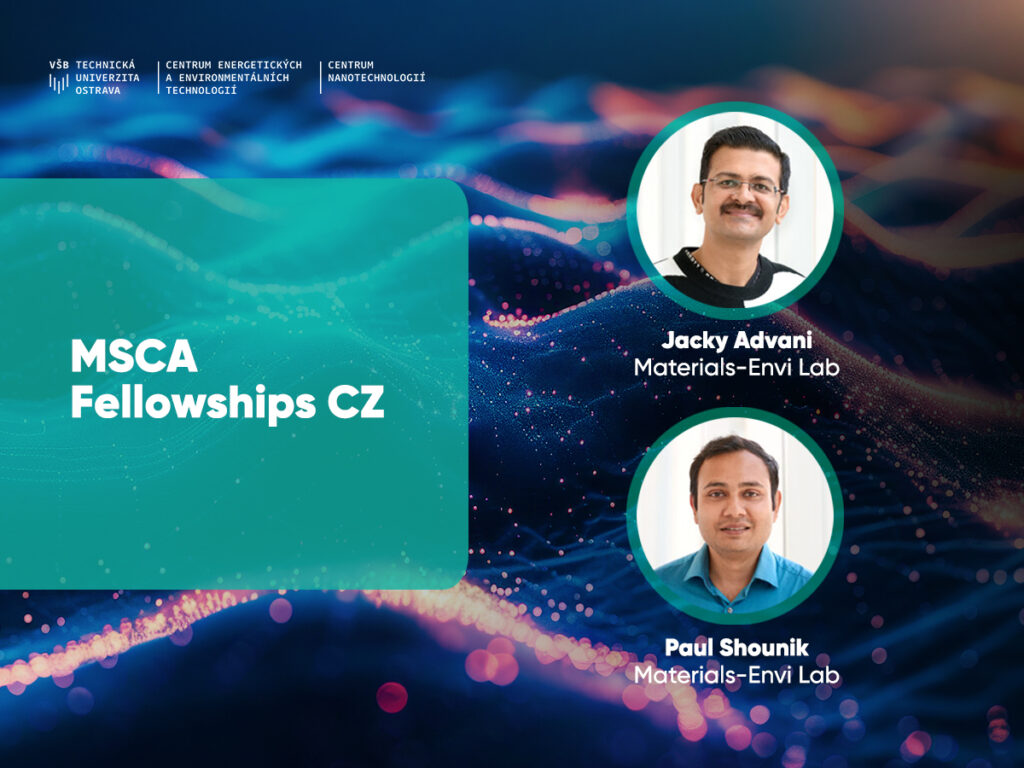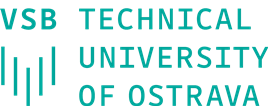The atomic engineering approach serves as the common denominator of two research initiatives stemming from the MSCA Fellowships CZ call under the Jan Amos Komensky Operational Programme that commenced in August at the Materials-Envi Lab (MEL) of the Centre for Nanotechnology of VSB-TUO. Jacky Advani will focus on advancing catalytic techniques for biofuel production, while Paul Shounik aims to create new ammonia production technologies utilizing precisely coordinated graphene-based atomic catalysts. A third successful project is slated to begin in January. VSB-TUO secured a total of five projects through this call. In addition to delivering research outputs, these projects are intended to facilitate knowledge transfer into practical applications and enhance the university’s international presence.
Paul Shounik’s project, titled “Ammonia Synthesis from Precise Oxo-coordinated Single Atom Graphene Catalysts (APRESIA),” tackles the global need for sustainable ammonia production. Ammonia is a strategic raw material not only in agriculture for fertilizer production but also within the pharmaceutical and chemical sectors, as well as in modern refrigeration systems. Annually, approximately 200 million tonnes of ammonia are produced worldwide. The current industrial processes for ammonia production are energy-intensive, requiring high temperatures and pressures, which also result in several adverse environmental effects.
“The APRESIA project aims to create an alternative method for producing ammonia through the electrochemical reduction of nitrates, primarily sourced from wastewater. This endeavor requires the development of an innovative process that utilizes efficient, cost-effective, and sustainable catalysts. Nitrate reduction not only provides a novel pathway for the electrochemical synthesis of ammonia but also contributes to the remediation of nitrates as pollutants in wastewater. This approach reduces the energy, environmental, and financial costs associated with ammonia production while also addressing the environmental and health issues linked to high nitrate concentrations in water systems,” explained Paul Shounik in the project proposal.
The primary goal of the project “Single-Atom Catalysis for Selective Hydrodeoxygenation of Biomass-derived Feedstocks for Sustainable Biofuel Production (SASH-Fuel)” is to develop advanced catalytic systems that utilize atomic catalysts to enhance the efficiency and selectivity of biofuel production from biomass sources.
“In the SASH-Fuel project, we will study processes for selective hydrodeoxygenation of biomass – chemical processes aimed at removing oxygen from organic molecules, typically in the form of water. The atomic catalysts we develop will be anchored to chemically modified graphene. We anticipate that these new catalysts will enhance the efficiency and sustainability of biofuel generation from biomass, aiding efforts to address global energy and environmental issues,” stated project investigator Jacky Advani.
Vishakha Goyal also succeeded in the call with her project titled “Single-atom Photocatalysts Based on Low-dimensional Carbons for Amine Methylation by Reduction of Carbon Dioxide,” set to begin next January. All three successful researchers will work in Prof. Zboril’s team at the Materials-Envi Lab. VSB-TUO has secured support for a total of five mobilities, while two additional projects have been awarded to the Faculty of Electrical Engineering and Computer Science under the leadership of chemist Martin Pumera. The overall budget amounts to CZK 17.5 million.
The aim of the call is to support high-quality projects submitted for the 2023 Horizon Europe Framework, specifically the MSCA Postdoctoral Fellowships 2023 call. These projects have received a positive evaluation from the European Commission, achieving a score of at least 70 percent, but were unable to secure funding due to budget constraints in the call. The initiative focuses on facilitating the international mobility of researchers from abroad to the Czech Republic, with the goal of gaining and transferring expertise, fostering the professional development of researchers, and enhancing the beneficiary’s internationalization as well as their capacity for research and innovation. The intended mobility duration is 24 months.




